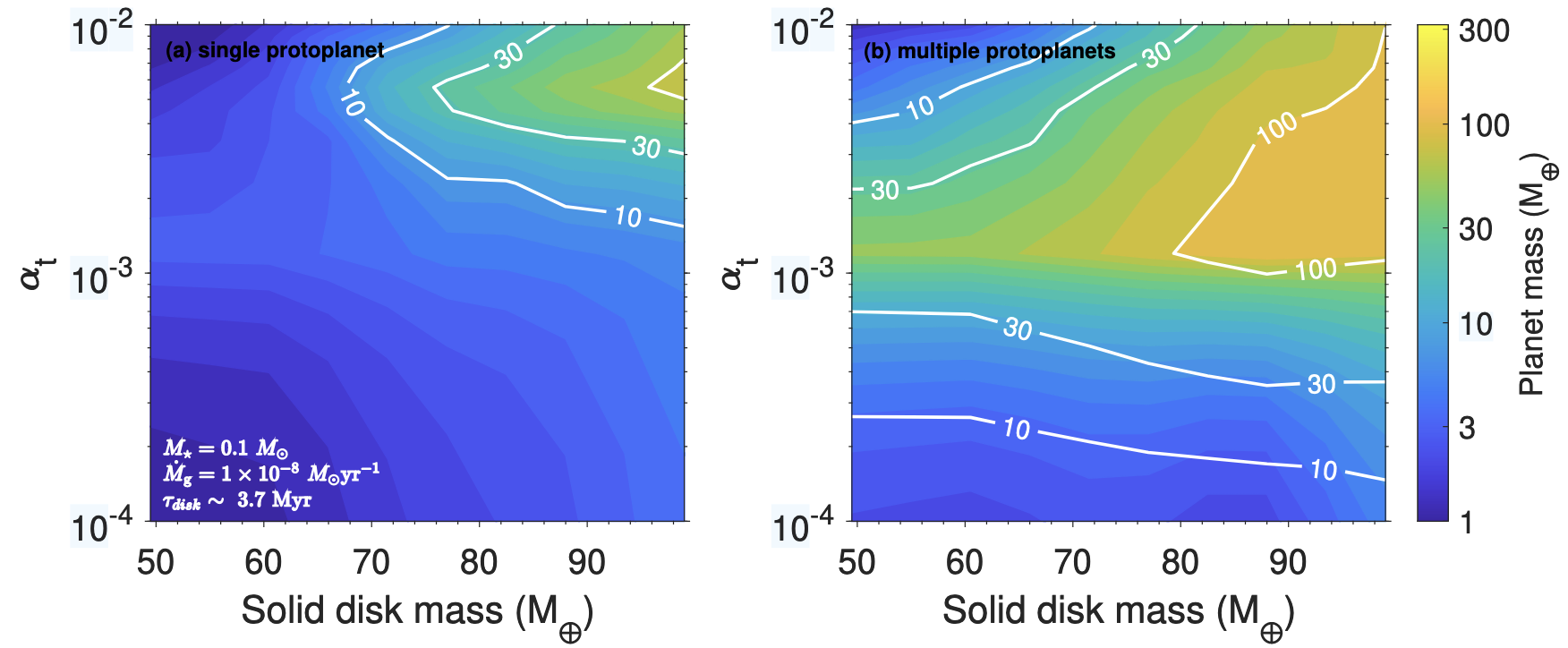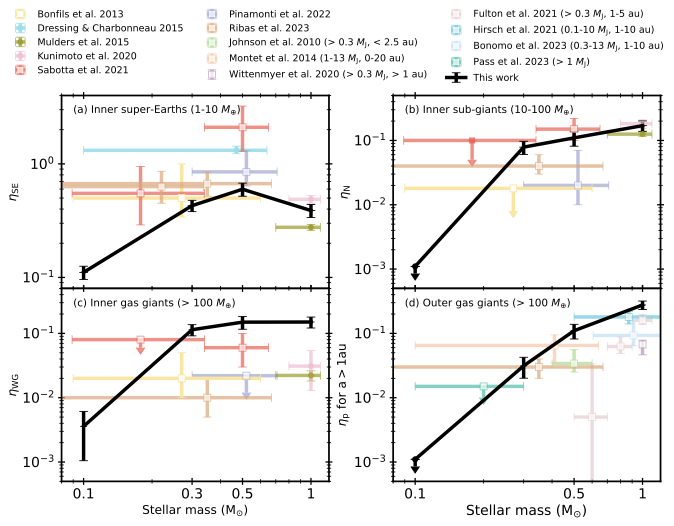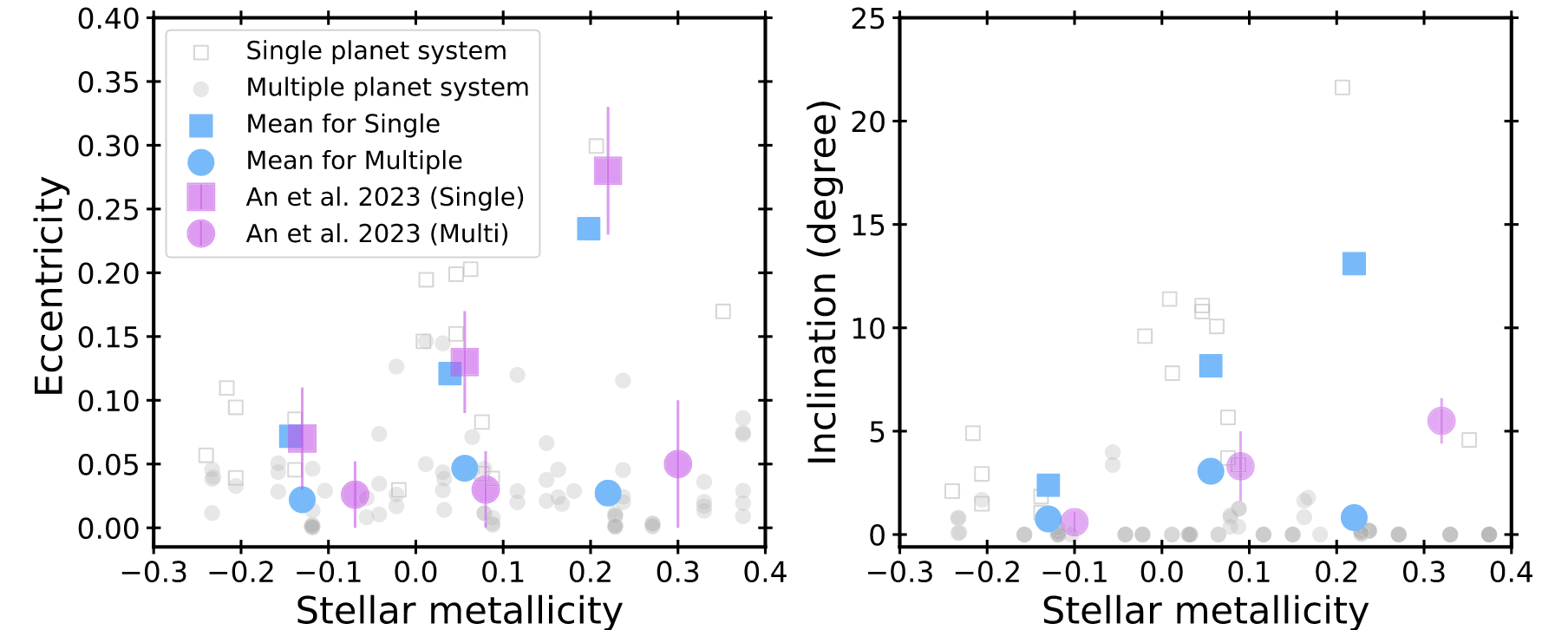
Fig.1: solid disk mass vs turbulent viscosity for giant planet formation starting from single vs multiple protoplanet growth.

Fig.2: occurrence rate of different planet populations vs host star's mass.

Fig.3: Eccentricity and mutual inclination vs system's multiplicity and host star's metallicity. Simulation results are corrected for transiting bias while comparing with An et al. 2023's observational data.
Planets form in young, protoplanetary disks. One of the key question in planet formation is that how the stellar environments shape the planet formation and evolution processes. Disk observation can tell us the initial conditions of planet formation, whereas the exoplanet surveys reveal the final products of such processes. We build the N-body planet population synthesis to bridge these two observational frontiers. This work is a N-body upgrade version of Liu et al., 2019. See details for Pan, Liu et al. 2024 A&A [ADS] [arxiv], 2025 ApJ [ADS] [arxiv].
Fig. 1 illustrates that giant planet formation, while extremely challenging, is still possible around very low-mass stars. They could form via the combination of pebble accretion and planet-planet collisions. The figure maps out which parameter space is most likely for giant planets, and how it compare with single planet growth.
In another work, we compare the synethesis planet populations with exoplanet demographs and archtecture. Our model can reproduce key features, both in terms of occurrence rate of various planet population statistics, as well as planet eccentricities and mutual inclination vs multiplicity (how many planets per system) and metallicity of the systems. These are shown in Figs. 2 and 3. In Figure 3, basically, multiple planets formed around more metal-rich stars are likely to undergo more frequent dynamical instabilities, and therefore the orbital eccentricities and inclinations of surviving planets increase with stellar metallicity. The systems that seldom undergo strong planet–planet scatterings remain stable, and those planets are on nearly circular and coplanar orbits.